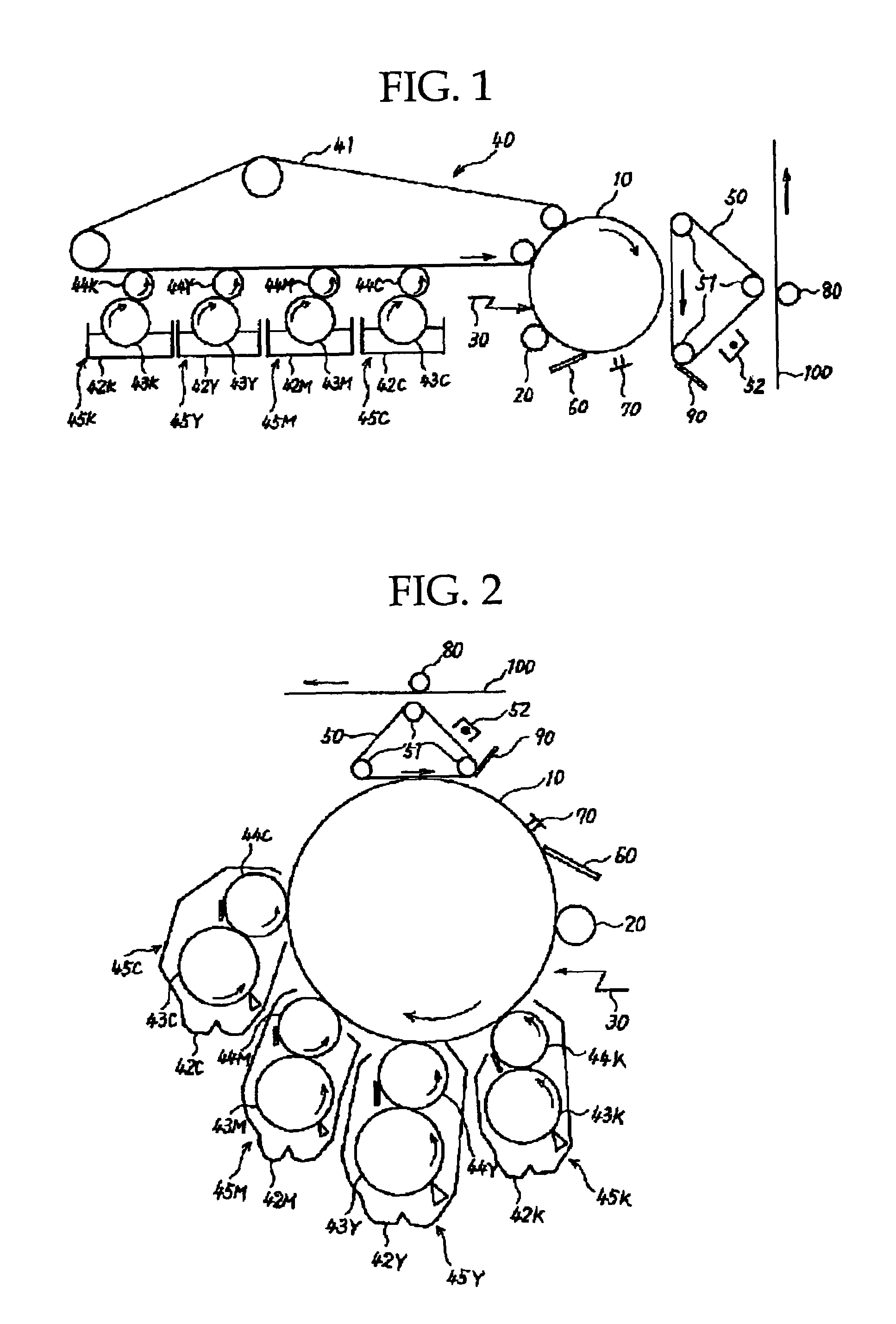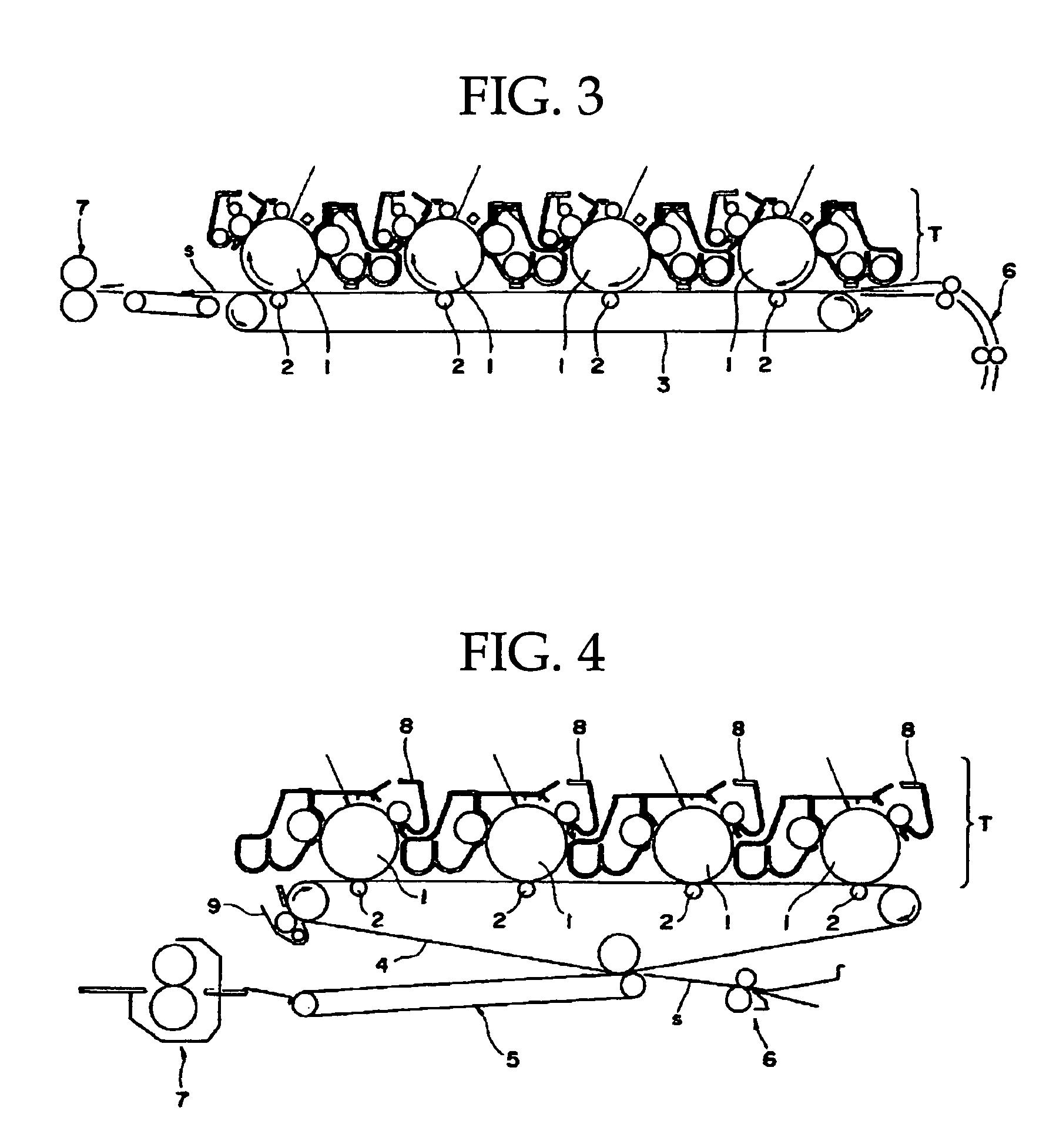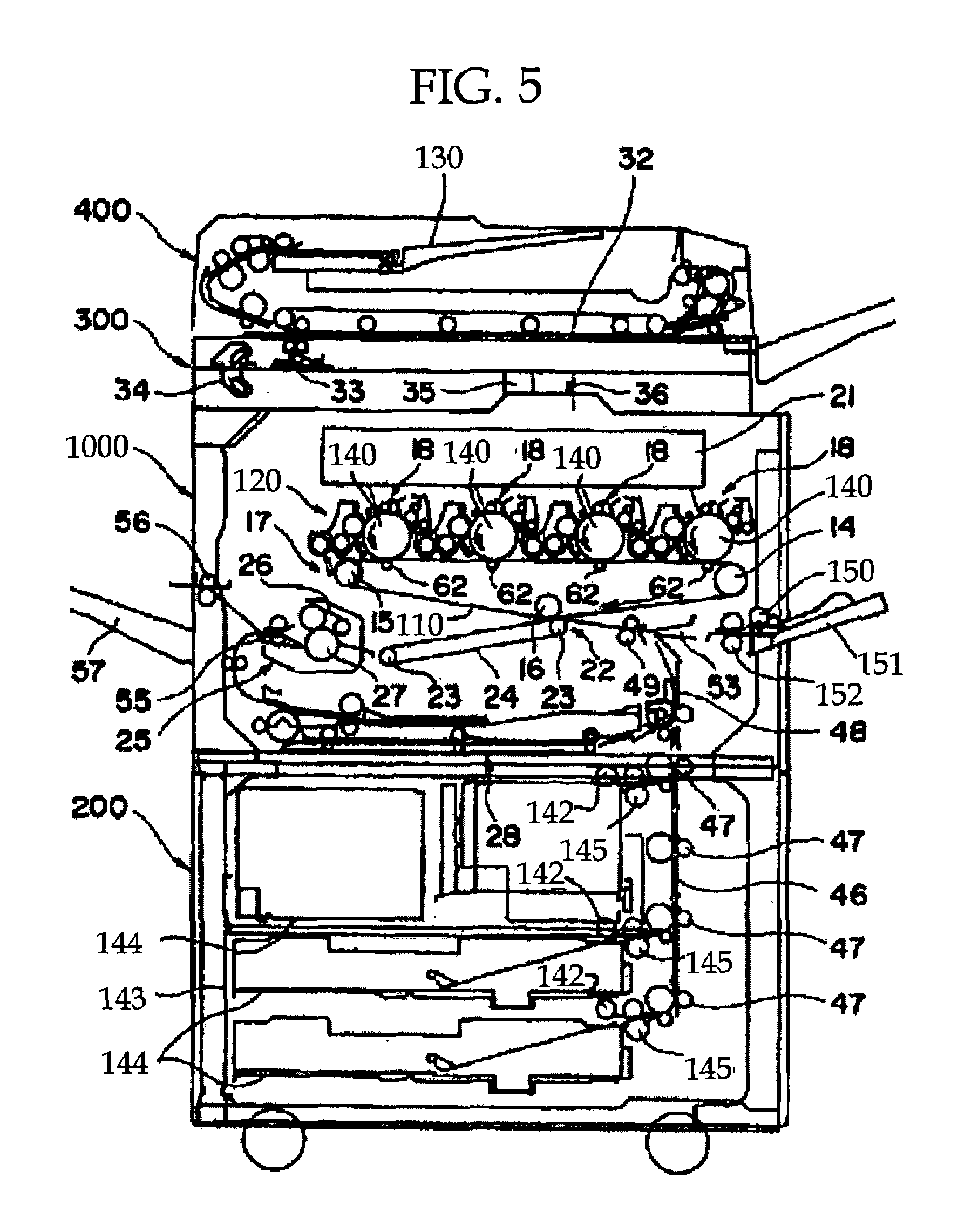Toner for developing electrostatic image, developer, process for forming image, and image forming apparatus
a technology for developing electrostatic images and toners, which is applied in the direction of electrographic processes, electrographic processes using charge patterns, instruments, etc., can solve the problems of low yield, limited materials that can be used for toners, and image creation of full-color copiers that are not at a satisfactory level, etc., to achieve high hardness, offset resistance, cleanability and environmental preservation, the effect of high hardness
- Summary
- Abstract
- Description
- Claims
- Application Information
AI Technical Summary
Benefits of technology
Problems solved by technology
Method used
Image
Examples
example 1
Manufacture Example 1
(Synthesis of Organic Particulate Emulsion)
[0285]To a reaction vessel provided with a stirrer and thermometer, 683 parts of water, 11 parts of the sodium salt of the sulfuric acid ester of methacrylic acid ethylene oxide adduct (ELEMINOL RS-30, Sanyo Chemical Industries, Ltd.), 83 parts of styrene, 83 parts of methacrylic acid, 110 parts of butyl acrylate, and 1 part of ammonium persulphate were introduced, and stirred at 3800 rpm / min for 30 minutes to give a white emulsion. This was heated, the temperature in the system was raised to 75° C. and the reaction performed for 4 hours. Next, 30 parts of an aqueous solution of 1% ammonium persulphate was added, and the reaction mixture was matured at 75° C. for 6 hours to obtain an aqueous dispersion of a vinyl resin “particulate emulsion 1” (copolymer of styrene-methacrylic acid-butyl acrylate-sodium salt of the sulfuric acid ester of methacrylic acid ethylene oxide adduct). The volume mean particle diameter of “part...
manufacture example 2
(Preparation of Aqueous Phase)
[0286]To 990 parts of water, 83 parts of “particulate emulsion 1,” 37 parts of a 48.3% aqueous solution of sodium dodecyl diphenylether disulfonic acid (ELEMINOL MON-7: Sanyo Chemical Industries, Ltd.) and 90 parts of ethyl acetate were mixed and stirred together to obtain a milky liquid. This was taken as “aqueous phase 1.”
[0287]Manufacture Example 3
(Synthesis of Low Molecular Weight Polyester)
[0288]In a reaction vessel equipped with a condenser, stirrer, and nitrogen inlet tube, 229 parts of bisphenol A ethylene oxide dimolar adduct, 529 parts of bisphenol A propylene oxide trimolar adduct, 208 parts of terephthalic acid, 46 parts of adipic acid and 2 parts of dibutyl tin oxide were placed, and the reaction was performed under normal pressure at 230° C. for 7 hours, and under a reduced pressure of 10–15 mmHg for 5 hours, then 44 parts of anhydrous trimellitic acid was introduced into the reaction vessel, and the reaction performed at 180° C. under nor...
manufacture example 4
(Synthesis of Intermediate Polyester)
[0289]In a reaction vessel equipped with a condenser, stirrer, and nitrogen inlet tube, 682 parts of bisphenol A ethylene oxide dimolar adduct, 81 parts of bisphenol A propylene oxide dimolar adduct, 283 parts of terephthalic acid, 22 parts of anhydrous trimellitic acid and 2 parts of dibutyl tin oxide were placed, and the reaction was performed under normal pressure at 230° C. for 7 hours, and then under a reduced pressure of 10 mmHg to 15 mmHg for 5 hours to obtain “intermediate polyester 1.” The “intermediate polyester 1” had a number average molecular weight of 2,200, weight average molecular weight of 9,700, Tg of 54° C., acid value of 0.5 and hydroxyl value of 52. Next, 410 parts of “intermediate polyester 1,” 89 parts of isohorone diisocyanate and 500 parts of ethyl acetate were placed in a reaction vessel equipped with a condenser, stirrer, and nitrogen inlet tube, and the reaction was performed at 100° C. for 5 hours to obtain “prepolyme...
PUM
| Property | Measurement | Unit |
|---|---|---|
| sphericity | aaaaa | aaaaa |
| number mean diameter Dn | aaaaa | aaaaa |
| diameter | aaaaa | aaaaa |
Abstract
Description
Claims
Application Information
 Login to View More
Login to View More - R&D
- Intellectual Property
- Life Sciences
- Materials
- Tech Scout
- Unparalleled Data Quality
- Higher Quality Content
- 60% Fewer Hallucinations
Browse by: Latest US Patents, China's latest patents, Technical Efficacy Thesaurus, Application Domain, Technology Topic, Popular Technical Reports.
© 2025 PatSnap. All rights reserved.Legal|Privacy policy|Modern Slavery Act Transparency Statement|Sitemap|About US| Contact US: help@patsnap.com



